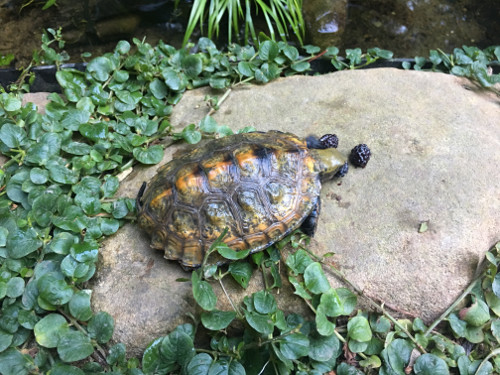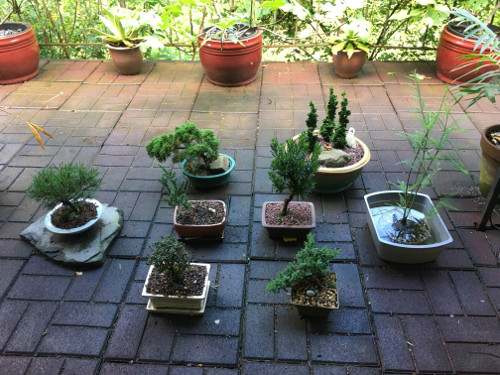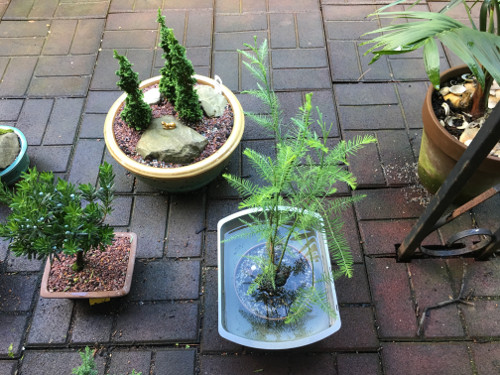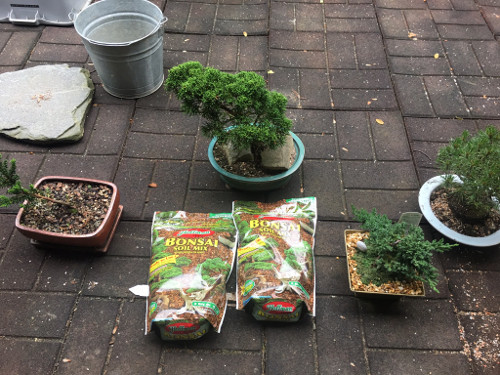L. Neil Smith’s THE LIBERTARIAN ENTERPRISE
Number 928, June 25, 2017

Ishigame: Cultural Appropriation and the Proprietary Ownership of Species
by Jeff Fullerton
[email protected]
Attribute to L. Neil Smith’s The Libertarian Enterprise
Cultural appropriation seems to be one of the latest bugaboos of the Left these days where it has suddenly become offensive for white girls to wear hoop earrings and other things you would never have imagined just a few years ago.
The idea—that people—especially those on the Left—are seeking to make collective propriety claims on culture among other things is nothing new under the sun. In the 1990s there was great outcry over the plunder of generic resources from Third World countries by explorers and entrepreneurs from First World countries. I remember Brazil had an especially heavy chip on its shoulder in regard to the issue and that resulted in heavy restrictions on the export of flora and fauna and other biomaterial. Such a shame too considering that we’ve only scratched the surface on the many potential tropical foliage plants—not to mention medicines sourced from the jungles there.
And it sure is funny how people who are supposably all about common ownership of everything are now all about property rights. Are you willing to bet that Karl Marx and Che Guevara tee shirts are not registered trademarks?
When I took on the husbandry of the Japanese Pond Turtle—Mauremeys japonica four years ago I never imagined one of the unintended consequences would be my heightened knowledge of many things Japanese. I now know at least one Kanji symbol—the one for month and moon that I picked up on in the Hayasui You Tube videos lots of other interesting factoids on the society stumbled across when reading articles in the Japan Times.
I also expanded my taste for Asian flora to incorporate into the outdoor setups and enrich the surrounding landscape when I began the reboot though I must confess I was never a total native plant zealot because I always did have a thing for Hostas and Day Lilies and a few other plants from that part of the world. Mainly because they look so nice in a naturalistic landscape with rocks and water. And there is water gardening itself which was also an Asian practice introduced relatively recently to western societies—most likely from Japan by way of the English who are a nation of master gardeners always looking to try something exotic and new. And from there to the US in the early 20th Century.

And there is the fine art of Bonsai that became popular in the West in the mid 20th Century. The interest in dwarfing trees in pots and training them into gnarled picturesque shapes that goes back to ancient China and was like many cultural practices and even plant species and cultivars—was introduced to Japan and then to the West. It came to the US along with the interest in martial arts and hibachi grills after World War II.
I first heard of bonsai in my childhood days circa fourth grade when I got my first catalog from Arthur Eames Algrove—an eccentric nursery man from Massachusetts who was one of the pioneers in the introduction of bonsai trees to the USA. The catalog—called the Twenty First Register came with an assortment of Venus Flytraps and pitcher plants that came from redeeming a coupon in a terrarium kit that was a Christmas gift from Grandma. The plants did not last long because a terrarium in a poorly lighted living room is not an optimal environment for carnivorous plants that would rather be in a bright sunny bog—and my horticultural ignorance of a novice plant enthusiast. Yet I was intrigued by many of the native plants in the catalog and would actually order a few in the years to come. The Sheep Laurel growing in the bog garden by my main pond descended from material ordered from Algrove in the early 1980s. He passed away not long after that but the memory lives on. And the seed of interest in bonsai that was planted. I experimented off and on through the years. Had a dwarf Suwannee Elm from a nursery in Florida in a nice little bonsai pot that lived for a while in the greenhouse and summered outdoors. After it died I replaced it with a Shimpaku Juniper which is the Japanese version of a Chinese Juniper.
Funny thing—many Japanese plants that bear the Latinized botanical epithet ’japonica’ are actually of Chinese origin—having arrived and naturalized in the island nation via human migration and trade with mainland Asia—which is the source also for the Kanji syllabary and the Yamoto culture that became the modern Japanese. It’s a lot like the relationship between England and continental Europe. The English probably got their love of gardening from the French who are pretty decent plantsmen and later in the age of colonial expansion acquired a taste for the exotic flora being discovered on other continents. And they really took a liking to what Japan had to offer. Likewise for Japan—which developed a fascination for cacti and air plants from Mexico—and exotic flora and fauna from elsewhere. I have a pretty good book on Tillandsia published by Attagawa Tropical and Alligator Garden. The text is in Japanese but it has awesome color photos and English subtitles of the Latin names and the names of locations in Mexico where wild plants were photographed.
As for my own pursuit of Bonsai—it goes on. I got the Shimpaku Juniper circa 2011—a little before I got more into Asian plants and got a Muhgo Pine (which is of European origin) a little thereafter. Then tried to train a badly damaged Yew that was on clearance from Rural King that looked promising but made several mistakes and gave up on it this spring. Then had a bad experience with a ready made Juniperus procumbens bonsai from Walmart which died along with one of the same I gave to my brother as a gift.

A couple years ago I got a Glyptostrobus pensilis from Woodlanders—this one comes from Vietnam and China and is a relative of the North American Bald Cypress and the Asian Dawn Redwood which are also common bonsai subjects so I thought it worth a try. For all I know; it might be the first of its kind to be used as such in history.
Got another Yew—a funny looking round leafed mutant called Amersfoort that comes from Holland and looks more like a mini Podacarpus tree. And this spring I really hit the jackpot with more pre bonsai at a local nursery. A coveted Hokkaido Elm with really nice form and a trio of a miniature type of Arborvitae to start a bonsai forest in the large planter where I tried to establish the bedraggled Yew from Rural King.
I also got another Juniper from Walmart and this time I corrected what I believe to be the cause of death for the others from that source. The soil—which looked like it was primarily composed of coir peat—that’s peat derived from ground up coconut husk which is supposed to be the ecologically friendly alternative to sphagnum moss peat mined from bogs. But unfortunately it is the worst thing for bonsai because it drains poorly and gets soggy when wet and when it dries out it becomes difficult to rehydrate and the later issue I think was the cause of demise for two junipers that just dried out and fell apart because the water was just beading off or running through the growing medium.

I unpotted that one and replaced the coir with a commercial bonsai soil mix along with all the other recent acquisitions. Expensive stuff at nine bucks for a little bag but I was very busy and didn’t have time to make my own. Eventually I will. The ingredients are familiar—fine ground up pine bark, humus and grit.
Just a few weeks ago I ordered a Podacarpus tree on Amazon and it was delivered to my door—a full sized pre trained bonsai in a really nice bonsai pot. And I was very pleased with it to say the least. Now I have a really nice collection sitting on my patio and I’m on a roll. What I need now are some more deciduous trees to balance it out as what I have—with exception of the Elm tree—are all conifers. No bonsai collection is complete without a Japanese Maple and Ginkgo trees are also common subjects. Asian Sweet Gums are sometimes used and the North American type ought to work as well.
As for the issue of cultural appropriation; I’ve been doing my share of it lately. Personally I think the people who complain about it are full of bunk because it’s not really appropriation of anyone’s culture but rather the natural osmotic process in which cultures evolve by transmitting ideas and practices around which enriches all our lives. The cultural appropriation woo woos probably have no idea what real culture is anymore than a desk jockey from the Fish and Boat Commission or the DNRs in other states would know a snapping turtle if it came along and bit off their big toe.
Culture I believe is like open source software which is freely exchanged and custom modified by people—as opposed to patented inventions to which inventors rightfully claim as intellectual property. The issue ought to be the same for naturally evolved plants and animals and heirloom crops and livestock breeds that have been passed around by people for millennia. Intellectual property rights would apply to organisms created by selective breeding or GMOs that have been patented.
Now some thorny issues have arisen regarding the transfer of genes from genetically modified crops to other fields by cross pollination in which farmers that accidentally acquire beneficial traits by accident might be considered guilty of stealing from the company that produced the GM variety much like a business duplicating licensed software to run on other machines. But from a libertarian perspective which I’ve never heard anyone articulate in regard to this issue I’ve often wondered if the legal tables could be turned, on grounds that contamination of non GMO crops by GMO could be considered a form of trespass like the libertarian definition of any form of pollution or public nuisance crossing beyond one’s property line?
If you are trying to grow Certified Organic—that really is a big freaking deal.
On the other hand I always thought the notion that the English moving rubber trees from Malaysia to plantations in other countries being regarded as an act of theft is fundamentally flawed. Or Brazil trying to stop foreign bio prospectors from collecting and identifying new plants from the rain forests. The major gripe was that people from other countries were stealing all the credit for discovering and classifying the native flora. But that was pretty much the case for North America pre 19th Century. While we were preoccupied taming a wild frontier—botanists from Europe were busy studying and classifying our native flora and fauna. I’ve also noticed that many Japanese plants—which I remind you again are often Chinese in origin bear the botanical epithet "thunbergii" after the Swedish botanist Thunberg who was a guest of the Tokugawa Shogunate in 1776. I actually have one of them—Allium thunbergii—a really near fall blooming onion that makes a near rock garden plant. It grows not far from Jeffersonia dubia—the Asian relative of the North American species named after our beloved TJ!
Before Japan, Thunberg also made his mark in South Africa.
Many plants in Mexico are named after the German botanist Pringel. Like the Litsea pringeli—aka Mexican Bay Laurel in my greenhouse. And another German—Martens described a Mexican spike moss which is of a group related to club mosses. It is a common house plant—Selaginella martensii. A common fish in the aquarium trade Paracheirodon axelrodi—the Cardinal Tetra from the Amazon Basin is named for an American fish expert of Russian/Jewish heritage, Dr Herbert Axelrod who I just learned was the founder of Tropical Fish Hobbyist magazine! He was more a specialist but also dealt with aquatic plants and wrote a very comprehensive book on the husbandry of fish and aquarium culture. Naturalists in earlier times were even more often generalists when it came to both botany and zoology.
Back in Colonial times it was the Europeans who botanized the United States and Mexico and Asia and Africa—mainly because at the time the people living in these counties were more preoccupied with basic survival and not the classification of plants and animals that were of little or no value to the common people. Of some maybe to the elites—which is no doubt what kept the art of bonsai alive through the centuries. Ieyasu Tokugawa was probably as mystified by Thunberg as Mexican peasants were by the crazy gringos who traveled from afar to collect useless plants and butterflies. And it was the same in the USA up until the end of the 19th Century. Americans were latecomers in the game. And we made up for it by classifying the overlooked diversity of reptiles and amphibians and freshwater fishes that had been lumped into broader generic categories by earlier foreign naturalists. Living in country does give you a native advantage over foreigners on a brief sojourn when it comes to observation of the local flora and fauna. As developing countries become more affluent—they are already discovering stuff on their own. Lately I’ve enjoyed a few You Tube videos from Mexico made by hobbyists working with native turtles like the Guerrero and Areolata wood turtles which I’ve had in the past and would absolutely love to have again someday before I die. It’s all in Spanish but I can enjoy and fundamentally understand the animals and what is going on just like the Hayasuii videos about the husbandry and ecology of Mauremys japonica that got me hooked on that species.
I’m guessing the reason people have issues about cultural appropriation is very similar to why other control freaks have issues about people keeping exotic pets. Mainly because it’s contagious, crosses borders and defies their attempts to control. It is argued that wildlife is common heritage and common property—but how can a nation state claim proprietary ownership of a species that freely ranges beyond their national boundaries? And what exactly is a native species? What is wildlife vs domesticated flora and fauna? And what right do states and their experts have to say that current number of domesticated species is fixed in the fashion of an official from the U.S. Patent preposterously declared a century or so ago that everything useful had already been invented?
And how can you justify let alone control anything that is naturally evolved and is still evolving—be it animals and plants or human culture? In the long run I don’t think anyone can.
Was that worth reading?
Then why not:
![]()
This site may receive compensation if a product is purchased
through one of our partner or affiliate referral links. You
already know that, of course, but this is part of the FTC Disclosure
Policy found here. (Warning: this is a 2,359,896-byte 53-page PDF file!)
TLE AFFILIATE
![]()

